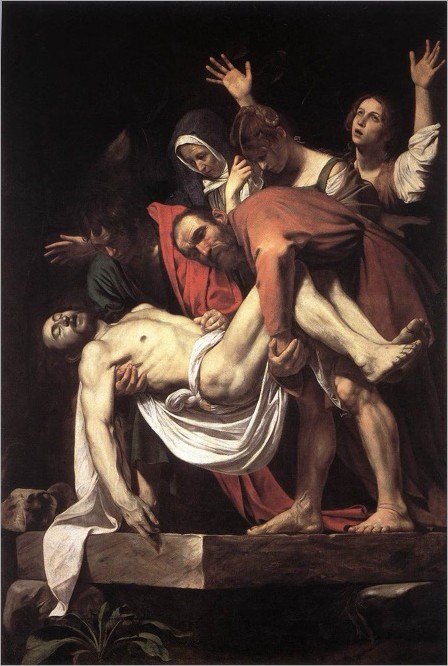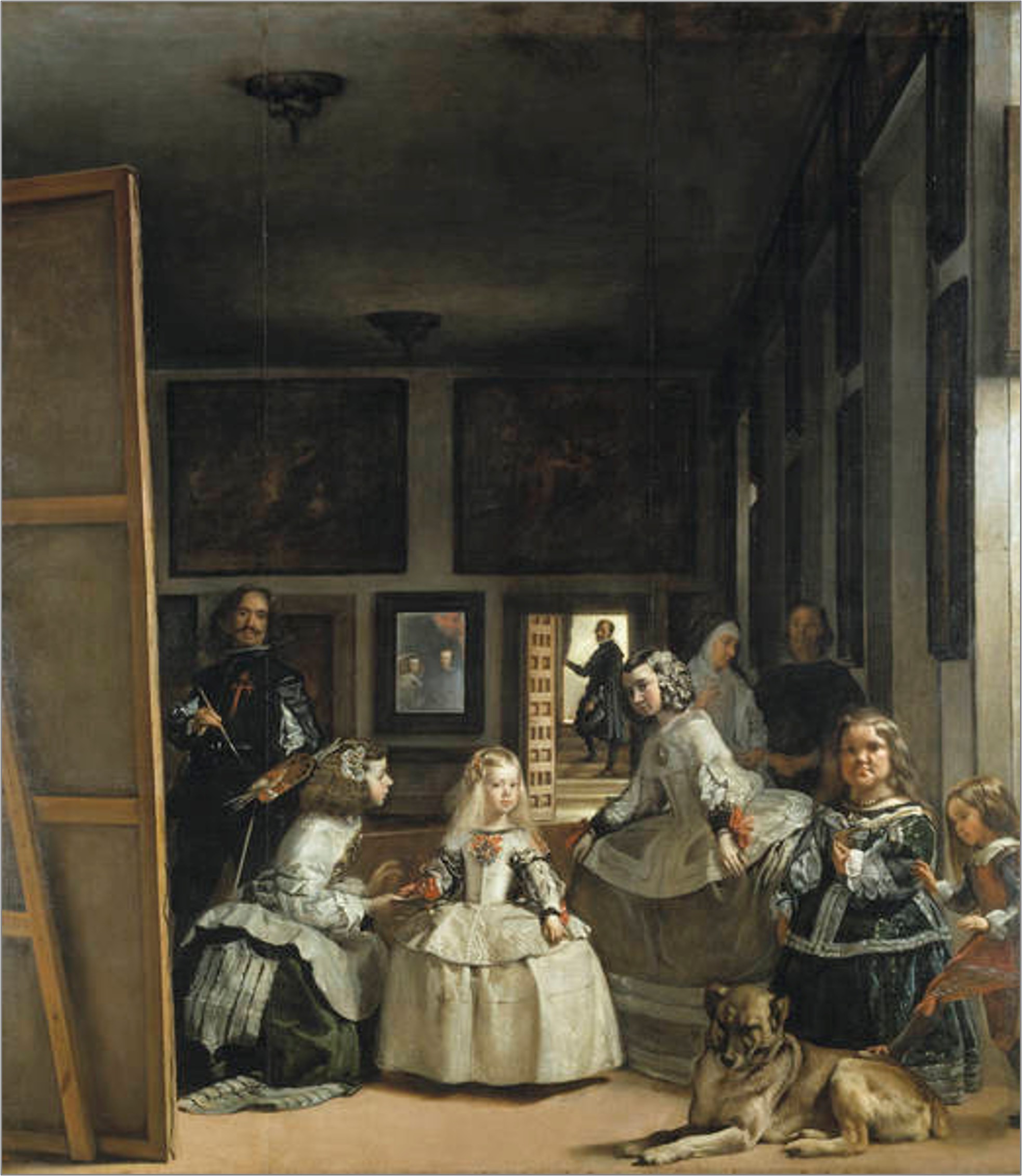背景:十七世纪的文化多元化
the diversification of culture in the 17th century.
- the Protestant Reformation and Catholic Counter-Reformation:南部天主教强化了宗教艺术的力量 —— 艺术应当在信徒心中激发虔诚与情感。
- nations and the patronage of kings and aristocrats:十七世纪,分散的权力开始向君主集中。法国(路易十四「朕即国家」),西班牙等。
- empiricism (经验主义), science, and exploration:哥白尼,伽利略,牛顿;地理大发现
风格的时代化:从文艺复兴线性到巴洛克色彩主义
Periodizing style: from Renaissance linearity to Baroque colorism
相对来讲,
时代风格与个体化(period styles and individuation):卡拉瓦乔式光影,贝尼尼式戏剧感
个人风格与名人文化兴起(personal styles and the rise of celebrity culture):「风格」成为艺术家个人创造力与社会地位的象征。
十七世纪的意大利:灵与肉之间
The spiritual and the sensual in Italy (1600-1700)
卡拉瓦乔(Caravaggio):戏剧化绘画(theatrical painting)=>《酒神》Bacchus,油画,1595 - 96:世俗的肉体性与诱惑感,腐烂的水果暗示着死亡
=>《埋葬基督》The Entombment of Christ,油画,1603 - 04:强烈的 chiaroscuro,观众视线与基督遗体几乎平齐,如临画中
=>《手提歌利亚头颅的大卫》David with the Head of Goliath,油画,c. 1609 - 10:歌利亚的头颅是卡拉瓦乔的自画像,体现赎罪与自省

=>《友第德与她的侍女及何乐弗尼的头颅》Judith and Her Maidservant,油画,c. 1625
=>《友第德割下何乐弗尼的头颅》Judith Slaying Holofernes,油画,c. 1620
=>《大卫》David,大理石,1623:刻画动作的瞬间,肌肉绷紧,衣褶翻转
=>《圣大德兰的狂喜》Ecstasy of Saint Teresa,大理石与铜,1642 - 52:灵性体验的肉体化,「痛苦的甜蜜」

十七世纪的西班牙:皇室赞助之兴
The rise of royal patronage in Spain (1600-1700)
西班牙,埃斯科里亚尔王宫与修道院(El Escorial)
信仰与街头之间(between the spirit and the street)=> 弗朗西斯科·德·苏巴朗(Francisco de Zurbarán),《圣塞拉皮翁》St. Serapion,油画,1628:chiaroscuro,但气氛肃穆沉重,强调殉道庄严
=> 巴托洛梅·埃斯特万·牟利罗(Bartolomé Estéban Murillo),《掷骰子的乞儿》Beggar Boys Playing Dice,油画,c. 1675:充满人性温情,天主教价值观下的贫穷被视为灵魂纯净
=>《宫娥》Las Meninas,油画,1656
- 「绘画的神学」,「艺术的哲学」,维拉斯奎兹的「最高成就」
- 观众被画中人物的凝视定位在国王与王后的位置,形成了观者与被观者的转换
- 福柯《词与物》:通过这幅画复杂的凝视关系,世界被看见,被描绘,被再现(represent),但主体(the subject)自己并不直接出现。

=>《镜前的维纳斯》Venus with a Mirror,油画,c. 1648:虽然与提香,鲁本斯等同样刻画感官魅力,但更着重宁静柔和的氛围
本节名录
- 1540: the Society of Jesus (耶稣会) is established in Rome, led by St. Ignatius (圣罗耀拉); Jesuit missionaries begin spreading Catholicism worldwide, and the first of many Jesuits (耶稣会士) to work in the Chinese imperial court is Matteo Ricci (利玛窦), who lives in Beijing 1601-10
- 1543: Nicolaus Copernicus, a Polish astronomer, publishes Six Books Concerning the Revolutions of the Heavenly Orbs《天体运行论》, which revolutionizes science and challenges Christianity by showing that the earth and other planets orbit around the sun
- (*) 1545 - 63: the Council of Trent (特伦托大公会议) establishes the Counter-Reformation (反宗教改革), which re-asserts the use of art for Catholic worship
- 1561: King Philip II (菲利普二世) of Spain establishes a capital city at Madrid
- (*) 1687: Isaac Newton, an English physicist and mathematician, publishes Mathematical Principles of Natural Philosophy, which explains the laws of gravity; his 1704 Opticks《光学》demonstrates that color is an effect of light
- Heinrich Wölfflin’s book Principles of Art History (1915) laid the groundwork for “formalism” (形式主义) in art history by describing patterns of stylistic difference between Renaissance and Baroque art